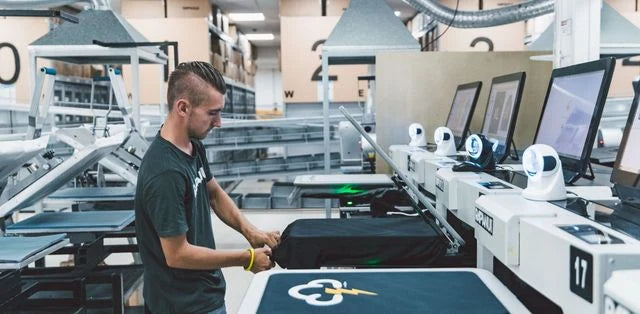
The Life Cycle of a Sustainable Garment
Share
At YAWL, our commitment to sustainability extends far beyond just using eco-friendly materials. We take a holistic approach to ensure that every garment we produce minimizes its environmental impact throughout its entire life cycle. In this blog post, we'll take you through the journey of a sustainable piece of clothing, from sourcing raw materials to manufacturing, usage, and finally, recycling.
1. Sourcing Raw Materials
Ethical and Sustainable Sourcing
The first step in the life cycle of a sustainable garment is sourcing raw materials responsibly. At YAWL, we prioritize materials that are organic, renewable, and have a minimal environmental footprint. Some of our key materials include:
- Organic Cotton: Grown without synthetic pesticides and fertilizers, organic cotton is safer for the environment and for the farmers who cultivate it.
- Bamboo: Bamboo grows rapidly without the need for pesticides or excessive water, making it an excellent sustainable resource.
- Recycled Polyester: Made from post-consumer plastic waste, recycled polyester helps reduce the amount of plastic in landfills and oceans.
2. Manufacturing
Eco-Friendly Production Processes
Once the raw materials are sourced, they undergo eco-friendly manufacturing processes. At YAWL, we ensure that our production methods adhere to the highest environmental standards:
- Energy Efficiency: We use renewable energy sources wherever possible and implement energy-efficient technologies to reduce our carbon footprint.
- Water Conservation: Our manufacturing processes are designed to minimize water usage and prevent water pollution.
- Non-Toxic Dyes: We use low-impact dyes that are free from harmful chemicals, ensuring that our garments are safe for both the wearer and the environment.
3. Usage
Durable and Timeless Design
A crucial aspect of sustainability is creating garments that are designed to last. At YAWL, we focus on producing high-quality, durable clothing that remains stylish and functional over time:
- Longevity: Our garments are made to withstand wear and tear, reducing the need for frequent replacements.
- Versatility: We design versatile pieces that can be worn in various settings, maximizing their utility and reducing the overall number of garments needed in a wardrobe.
Care and Maintenance
Proper care and maintenance can significantly extend the life of a garment. We provide our customers with tips on how to care for their YAWL clothing:
- Washing: Use cold water and environmentally friendly detergents to wash your garments, and avoid excessive washing.
- Drying: Air-dry your clothes whenever possible to save energy and reduce wear and tear.
- Repairs: Mend small tears and replace buttons to keep your garments in good condition for longer.
4. End of Life
Recycling and Upcycling
When a garment reaches the end of its useful life, recycling and upcycling are sustainable ways to repurpose it:
- Recycling: We encourage customers to return their old YAWL garments to us. We collaborate with recycling facilities that break down the fibers and create new materials for future use.
- Upcycling: Creative upcycling can transform old clothes into new items, such as tote bags, patches, or accessories, giving them a new lease on life.
Conclusion
The life cycle of a sustainable garment at YAWL exemplifies our dedication to environmental stewardship and ethical fashion. From responsibly sourcing raw materials to eco-friendly manufacturing, promoting durable and versatile designs, and ensuring thoughtful end-of-life solutions, every step we take is aimed at reducing our environmental impact. By choosing YAWL, you're not just buying a piece of clothing; you're supporting a sustainable future. Join us in making a positive impact on the planet, one garment at a time.



